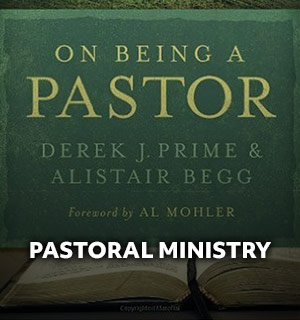
By Joy Allmond
When the going gets tough, church leaders get going—sometimes out the door.
In 2016, Lifeway Research reported the top reasons pastors leave the pastorate. Second only to a change in calling (40 percent), one quarter (25 percent) of pastors surveyed said they left the pastorate due to conflict in the church.
Carey Nieuwhof, founding pastor of Toronto’s Connexus Church, isn’t surprised.
“Generally, we handle conflict poorly in the church,” says Nieuwhof. “This is ironic because we should be the best in the world at it—we were given a template in Matthew 18.”
And as a ministry consultant, he sees this played out among church staffs and leadership teams.
“What tends to happen is you either deal with it harshly, or in a lot of cases—on the grace side—you become an avoider and an enabler,” says Nieuwhof.
“I’ve seen this a lot: We go soft on the issue and soft on the person. Or we are hard on the issue and hard on the person. What we should be is hard on the issue, soft on the person.”
Nieuwhof explains that balance is hard to find because the church doesn’t see it modeled well.
“On one hand, we tend to go, ‘We’re not going to talk about it, because we’re all Christians, and it’s going to be fine,” he says.
“On the other hand, we can go in there like a bull in a China shop and say, ‘Everyone’s fired,’ or, ‘Don’t ever come here again.’”
Nieuwhof has seen the horror stories on both sides.
“When you’re too soft, you end up with a very mediocre or failing team, and all your high capacity people leave,” he says.
“But when you’re being too hard, you fail to be firm on the issue and kind to the person. We should attack problems, not people. But often, in the church, we avoid problems and attack people. That’s opposite of the gospel.”
Here are three ways Nieuwhof says church leaders can find a balanced approach to dealing with conflict among their teams—especially when there’s disagreement on the way ministry is getting done.
1. Ask questions
Neiuwhof says if a pastor or senior leader is in or going into a high conflict setting or situation, they need to assume the best.
“Even if you’re frustrated with an employee or staff member, assume they were actually trying to accomplish the right thing,” advises Nieuwhof. “Make sure your tone—whether in writing or in person—conveys this message.”
He says to start the conflict resolution process by asking a question.
“We tend to rush to judgments in the absence of information,” he says. “Instead we should ask questions like, ‘I’m not seeing a lot of traction. What are your thoughts on that?’”
Nieuwhof says many leaders will be surprised by what they learn through simply being inquisitive.
“Half the time, if you’re the senior leader, you have no idea what’s going on,” he says.
“You’re not down on that level—you’re not with the youth group on Friday night, and you’re not in guest services on Sunday morning, and you’re not in worship team or choir rehearsal on Wednesday night.”
Nieuwhof says in some cases, an answered question is all it takes to resolve conflict.
2. Brainstorm with them
Often, Nieuwhof says, the conflict resolution needs to go beyond questions.
“Go back for a second round of conversation,” he says. “Paint a picture for them. Tell them, ‘Here’s what I see. I wondered about this, I wondered about that.’ If you don’t still have a breakthrough, get very specific with defining the issue.”
This gives the senior leader the chance to engage the person with finding solutions to problems facing the congregation or the leadership team.
An example Nieuwhof offers is, “In my view, the outcome we’re shooting for here is _______. What do we need to do to get there? How can we work to increase attendance or create a more hospitable environment?”
Work on the solution together.
3. Create accountability
This is one area, Neiuwhof says, needs drastic improvement in the local church.
“Circle back a week later, a month later—whatever the appropriate timeframe is—and say, ‘Ok, I’ve been looking at some results, and I’ve been observing the tone. How do you think it’s going? Are you happy with it?’”
By doing these three things, Nieuwhof says, leaders can create a calmer environment for open communication when things get tense in ministry.
“These are very healthy practices,” he say, “that help prevent resentment from building up.”
JOY ALLMOND (@joyallmond) is managing editor for Facts & Trends.








